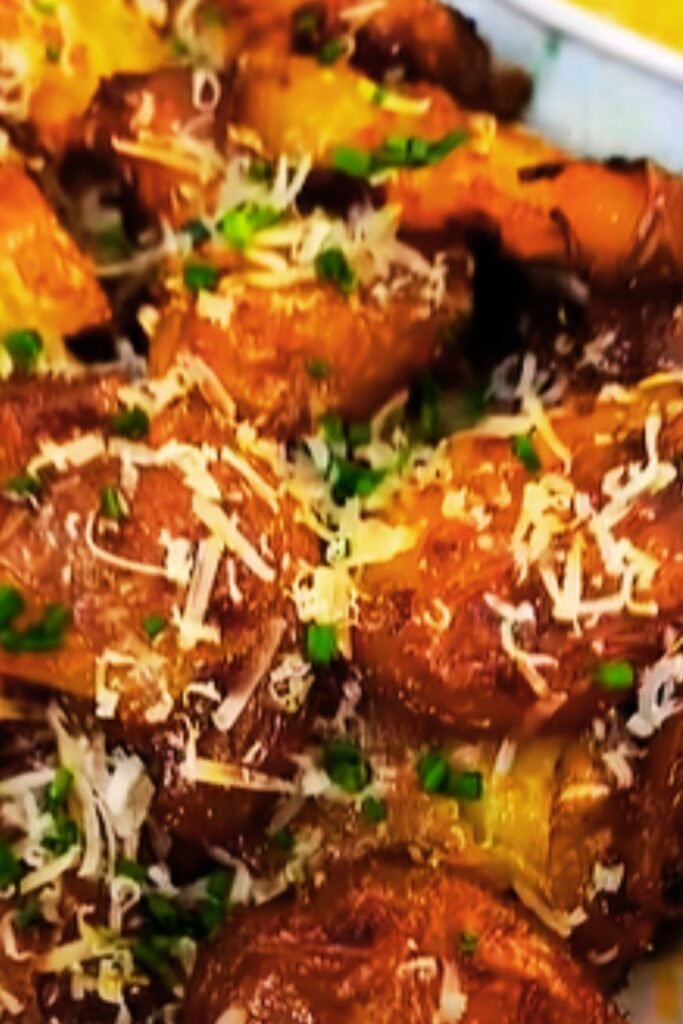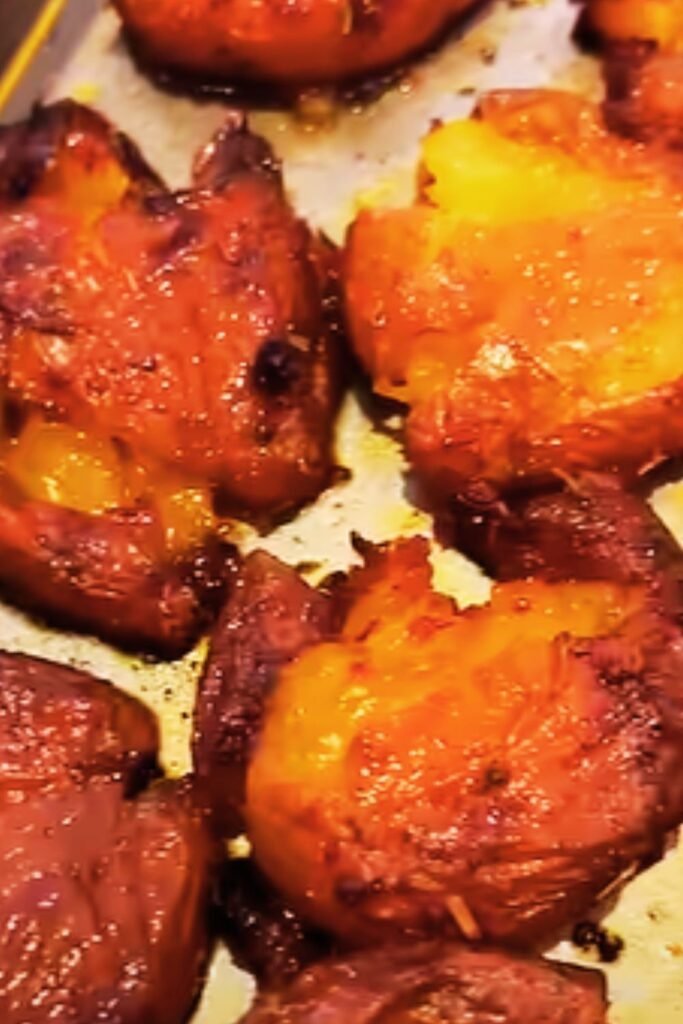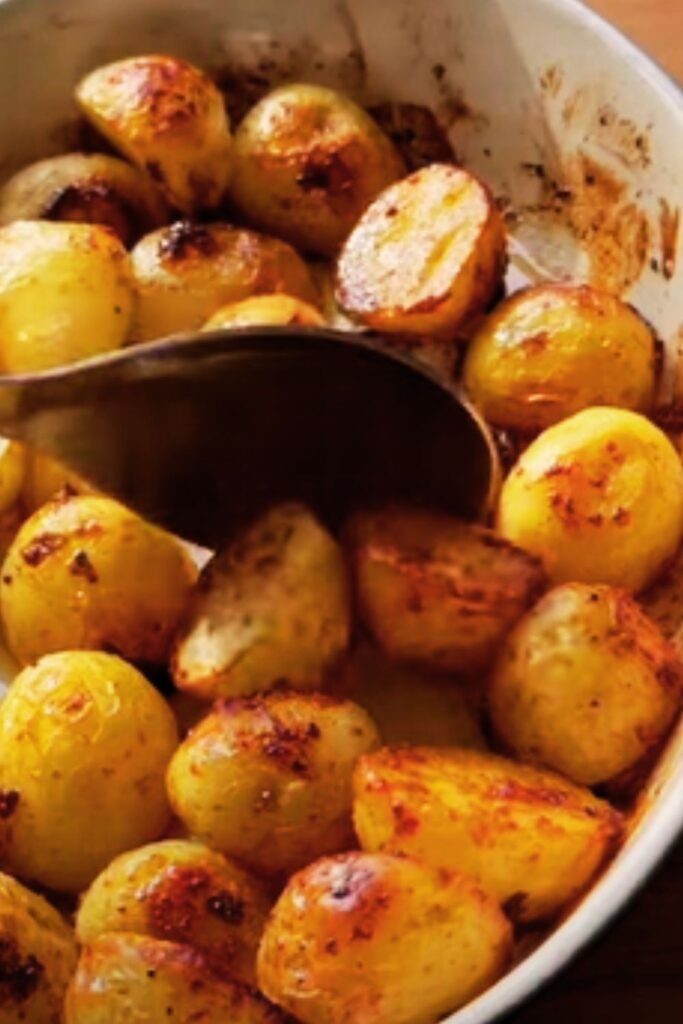There’s something absolutely magical about the combination of honey and mustard that transforms ordinary potatoes into an extraordinary side dish. I’ve been perfecting this honey mustard potato recipe for years, and I can confidently say it’s become one of my most requested dishes at family gatherings and dinner parties. The golden, caramelized exterior paired with fluffy, tender interiors creates a symphony of textures that will have your guests asking for the recipe every single time.
What makes this dish so special isn’t just the incredible flavor profile, but also its versatility. Whether you’re serving it alongside a Sunday roast, grilled chicken, or as part of a vegetarian feast, these honey mustard potatoes complement virtually any main course. The sweet notes from the honey perfectly balance the tangy bite of the mustard, while herbs and spices add depth and complexity that elevates this humble root vegetable to gourmet status.
Understanding the Magic Behind Honey Mustard Potatoes
The beauty of honey mustard potatoes lies in the chemical reaction that occurs during cooking. When honey meets high heat, it undergoes caramelization, creating those beautiful golden-brown edges that provide both visual appeal and concentrated sweetness. Meanwhile, the mustard adds not only flavor but also acts as an emulsifier, helping the honey and oil create a glossy coating that clings beautifully to each potato piece.
Key Flavor Components:
- Honey: Provides natural sweetness and promotes caramelization
- Mustard: Adds tangy depth and acts as a binding agent
- Herbs: Fresh or dried herbs like rosemary, thyme, or oregano enhance the earthy potato flavor
- Garlic: Adds aromatic complexity and savory notes
- Seasonings: Salt, pepper, and paprika create a well-rounded flavor profile
Essential Ingredients and Their Roles
Creating the perfect honey mustard potatoes requires understanding each ingredient’s contribution to the final dish. I’ve experimented with countless variations over the years, and this combination consistently delivers outstanding results.
Potato Selection Guide
| Potato Type | Best Use | Texture Result | Cooking Time |
|---|---|---|---|
| Yukon Gold | Roasting, Mashing | Creamy interior, crispy exterior | 25-30 minutes |
| Red Potatoes | Roasting, Boiling | Firm texture, holds shape well | 20-25 minutes |
| Russet | Baking, Frying | Fluffy interior, very crispy exterior | 30-35 minutes |
| Fingerling | Roasting whole | Buttery texture, tender skin | 20-25 minutes |
| Baby Potatoes | Roasting, Steaming | Creamy, delicate texture | 15-20 minutes |
Honey Varieties and Their Impact
| Honey Type | Flavor Profile | Best Pairing | Intensity Level |
|---|---|---|---|
| Clover Honey | Mild, floral | Delicate herbs, light mustards | Light |
| Wildflower Honey | Complex, robust | Strong mustards, bold herbs | Medium |
| Orange Blossom | Citrusy, bright | Dijon mustard, fresh herbs | Medium |
| Buckwheat Honey | Dark, molasses-like | Whole grain mustard, rosemary | Strong |
| Manuka Honey | Rich, medicinal notes | Coarse mustard, garlic | Very Strong |

My Signature Honey Mustard Potato Recipe
After years of perfecting this recipe, I’m excited to share my go-to method that never fails to impress. This recipe serves 6-8 people as a side dish and takes approximately 45 minutes from start to finish.
Ingredients List
For the Potatoes:
- 3 pounds mixed baby potatoes (halved if large)
- 3 tablespoons olive oil
- 1 teaspoon salt
- 1/2 teaspoon black pepper
- 1/2 teaspoon paprika
For the Honey Mustard Glaze:
- 1/4 cup honey (I prefer wildflower)
- 3 tablespoons Dijon mustard
- 2 tablespoons whole grain mustard
- 2 cloves garlic, minced
- 2 tablespoons fresh rosemary, chopped
- 1 tablespoon apple cider vinegar
- 1/4 teaspoon red pepper flakes (optional)
For Garnish:
- 2 tablespoons fresh parsley, chopped
- 1 tablespoon fresh chives, chopped
- Flaky sea salt to taste
Step-by-Step Preparation Method
Preparation Phase:
- Preheat your oven to 425°F (220°C). This high temperature is crucial for achieving that perfect caramelized exterior.
- Wash and scrub the potatoes thoroughly. I prefer to leave the skins on for added texture and nutrition.
- If using larger potatoes, cut them into uniform pieces (about 1-2 inches) to ensure even cooking.
- Pat the potatoes completely dry with paper towels – this step is essential for achieving crispy exteriors.
Seasoning and Initial Roasting: 5. In a large bowl, toss the potatoes with olive oil, salt, pepper, and paprika until evenly coated. 6. Arrange the potatoes in a single layer on a large baking sheet, ensuring they’re not overcrowded. 7. Roast for 20-25 minutes, flipping once halfway through, until they’re golden and tender when pierced with a fork.
Creating the Honey Mustard Glaze: 8. While the potatoes are roasting, whisk together honey, both mustards, minced garlic, rosemary, apple cider vinegar, and red pepper flakes in a small bowl. 9. The mixture should be smooth and well-combined. If it’s too thick, add a tablespoon of warm water.
Final Assembly: 10. Remove the potatoes from the oven and immediately drizzle the honey mustard glaze over them. 11. Gently toss to coat evenly, then return to the oven for an additional 8-10 minutes. 12. The glaze should be bubbling and caramelized, and the potatoes should be beautifully golden. 13. Remove from oven and immediately garnish with fresh herbs and flaky sea salt.

Nutritional Benefits and Health Considerations
These honey mustard potatoes aren’t just delicious – they’re also packed with nutritional benefits. Potatoes are often unfairly maligned, but they’re actually incredibly nutritious when prepared properly.
Nutritional Breakdown Per Serving
| Nutrient | Amount | % Daily Value | Health Benefits |
|---|---|---|---|
| Calories | 185 | 9% | Moderate energy content |
| Carbohydrates | 32g | 11% | Sustained energy release |
| Protein | 4g | 8% | Muscle maintenance |
| Fiber | 3g | 12% | Digestive health |
| Potassium | 620mg | 18% | Heart health, blood pressure regulation |
| Vitamin C | 15mg | 17% | Immune system support |
| Vitamin B6 | 0.3mg | 18% | Brain function, metabolism |
| Iron | 1.2mg | 7% | Oxygen transport |
Health Benefits of Key Ingredients:
- Potatoes: Rich in potassium, vitamin C, and fiber. The skin contains many nutrients, which is why I recommend leaving it on.
- Honey: Contains antioxidants and has antimicrobial properties. It’s a natural sweetener that provides quick energy.
- Mustard: Contains selenium and omega-3 fatty acids. The seeds have anti-inflammatory properties.
- Garlic: Known for its immune-boosting and heart-healthy properties.
- Rosemary: Contains antioxidants and has been linked to improved memory and concentration.
Variations and Flavor Adaptations
One of the things I love most about this recipe is its adaptability. Over the years, I’ve created numerous variations to suit different tastes and dietary needs.
International Flavor Profiles
Mediterranean Style:
- Add dried oregano, fresh thyme, and a splash of lemon juice
- Include chopped olives and sun-dried tomatoes
- Finish with crumbled feta cheese
Asian-Inspired:
- Replace mustard with soy sauce and add fresh ginger
- Include sesame oil and finish with sesame seeds
- Add a touch of rice vinegar and green onions
Mexican-Influenced:
- Add cumin, chili powder, and lime juice
- Include fresh cilantro and jalapeños
- Finish with crumbled queso fresco
German-Style:
- Use whole grain mustard and add caraway seeds
- Include fresh dill and a splash of white wine vinegar
- Serve with a dollop of sour cream
Dietary Modifications
Vegan Version:
- Replace honey with maple syrup or agave nectar
- The rest of the recipe remains the same
- Consider adding nutritional yeast for extra flavor
Low-Sugar Option:
- Reduce honey to 2 tablespoons
- Add extra mustard and herbs for flavor
- Include a touch of stevia if needed
Gluten-Free Consideration:
- Ensure your mustard is certified gluten-free
- All other ingredients are naturally gluten-free
- Perfect for those with celiac disease

Serving Suggestions and Pairings
These honey mustard potatoes are incredibly versatile and pair beautifully with a wide range of main dishes. I’ve served them at countless dinner parties, and they never fail to complement the meal perfectly.
Perfect Protein Pairings
Poultry:
- Roasted chicken with herbs
- Grilled chicken thighs
- Turkey breast with cranberry sauce
- Duck confit with orange glaze
Beef:
- Grilled ribeye steak
- Slow-cooked pot roast
- Beef tenderloin with red wine reduction
- Braised short ribs
Pork:
- Honey-glazed ham
- Pork tenderloin with apple stuffing
- Bacon-wrapped pork chops
- Pulled pork sandwiches
Seafood:
- Grilled salmon with dill
- Seared scallops
- Baked cod with lemon
- Shrimp scampi
Vegetarian Options:
- Stuffed portobello mushrooms
- Grilled eggplant
- Quinoa-stuffed bell peppers
- Lentil shepherd’s pie
Seasonal Menu Integration
Spring Menus:
- Pair with asparagus and fresh peas
- Serve alongside lamb with mint sauce
- Include in Easter brunch spreads
Summer Gatherings:
- Perfect for barbecue side dishes
- Complements grilled vegetables
- Great for outdoor picnics and potlucks
Fall Harvest:
- Pairs with roasted root vegetables
- Complements thanksgiving turkey
- Works well with seasonal squash dishes
Winter Comfort:
- Ideal alongside hearty stews
- Perfect with braised meats
- Complements warming soups
Storage and Reheating Guidelines
Proper storage and reheating techniques ensure your honey mustard potatoes maintain their delicious flavor and texture even as leftovers.
Storage Methods
| Storage Method | Duration | Quality Retention | Best Practices |
|---|---|---|---|
| Refrigerator | 3-4 days | Good | Store in airtight container |
| Freezer | 2-3 months | Fair | Freeze in portion-sized containers |
| Room Temperature | 2 hours max | Poor | Only for immediate consumption |
Reheating Techniques
Oven Reheating (Recommended):
- Preheat oven to 375°F (190°C)
- Spread potatoes on a baking sheet
- Heat for 10-15 minutes until warmed through
- This method best preserves the crispy texture
Microwave Method:
- Place potatoes in microwave-safe dish
- Cover with damp paper towel
- Heat in 30-second intervals
- Stir between intervals to ensure even heating
Stovetop Method:
- Heat a large skillet over medium heat
- Add a small amount of oil
- Reheat potatoes, stirring occasionally
- Cook until heated through and slightly crispy
Troubleshooting Common Issues
Even experienced cooks sometimes encounter challenges with this recipe. Here are solutions to the most common problems I’ve encountered over the years.
Problem-Solution Guide
| Issue | Cause | Solution | Prevention |
|---|---|---|---|
| Soggy potatoes | Too much moisture | Increase oven temperature, extend cooking time | Pat potatoes dry thoroughly |
| Burnt glaze | Oven too hot | Lower temperature, cover with foil | Monitor closely during final minutes |
| Uneven cooking | Inconsistent sizing | Cut potatoes uniformly | Use similar-sized potatoes |
| Bland flavor | Insufficient seasoning | Add more salt, herbs, or mustard | Taste and adjust seasonings |
| Sticky coating | Too much honey | Add more mustard or vinegar | Measure ingredients carefully |
Expert Tips for Perfect Results
After making this recipe hundreds of times, I’ve learned several techniques that guarantee perfect results every time.
Temperature Control:
- Always preheat your oven fully before adding potatoes
- Use an oven thermometer to ensure accuracy
- Don’t overcrowd the baking sheet – use two if necessary
Timing Secrets:
- Start checking potatoes at the minimum cooking time
- The glaze should be added when potatoes are nearly done
- Let potatoes rest for 5 minutes after cooking for optimal texture
Ingredient Quality:
- Use fresh herbs whenever possible
- Choose high-quality honey for the best flavor
- Invest in good Dijon mustard – it makes a difference
Preparation Techniques:
- Keep potato pieces uniform for even cooking
- Don’t skip the drying step – it’s crucial for crispiness
- Make extra glaze – it’s delicious on other vegetables too
Questions and Answers
Q: Can I make honey mustard potatoes ahead of time? I absolutely recommend preparing the glaze ahead of time, but I prefer to roast the potatoes fresh. You can par-cook the potatoes earlier in the day, then finish them with the glaze when ready to serve. This maintains the best texture while saving time.
Q: What’s the best potato variety for this recipe? I’ve found that Yukon Gold potatoes work exceptionally well because they hold their shape while developing a creamy interior. However, baby potatoes or red potatoes are also excellent choices. Avoid russets if you want the potatoes to hold their shape.
Q: How can I make this recipe spicier? There are several ways to add heat: increase the red pepper flakes, add a pinch of cayenne pepper to the glaze, or include some finely minced jalapeño. I’ve also experimented with adding a touch of hot sauce to the glaze with great results.
Q: Can I substitute the honey with another sweetener? Absolutely! Maple syrup works beautifully and creates a slightly different but equally delicious flavor profile. Agave nectar is another good option. If using artificial sweeteners, you may need to adjust the liquid content of the glaze.
Q: Why do my potatoes sometimes turn out soggy? Soggy potatoes usually result from excess moisture. Make sure to thoroughly dry the potatoes after washing, don’t overcrowd the baking sheet, and ensure your oven is properly preheated. Also, avoid covering the potatoes while they’re cooking.
Q: How do I know when the potatoes are done? The potatoes should be golden brown on the outside and easily pierced with a fork. The glaze should be bubbling and caramelized, not watery. If you’re unsure, cook for an additional 5 minutes rather than risk undercooking.
Q: Can I use this glaze on other vegetables? This honey mustard glaze is incredibly versatile! I’ve used it successfully on carrots, Brussels sprouts, cauliflower, and even parsnips. The cooking times may vary depending on the vegetable, but the glaze works wonderfully on most roasted vegetables.
Q: What should I do if my glaze is too thick? If your glaze becomes too thick, simply whisk in a tablespoon of warm water or apple cider vinegar. The mixture should be pourable but not too thin. I usually aim for a consistency similar to thick maple syrup.
Q: How can I make this recipe more kid-friendly? For children, I often reduce the mustard slightly and increase the honey. You can also omit the red pepper flakes and use milder herbs like parsley instead of rosemary. The sweet and tangy flavor usually appeals to kids once they try it.
Q: Is this recipe suitable for meal prep? While these potatoes are best served fresh, they can be part of a meal prep routine. I recommend storing the components separately – cooked potatoes in one container and the glaze in another. Combine and reheat when ready to serve for the best results.
These honey mustard potatoes have become one of my signature dishes, and I’m confident they’ll become a favorite in your kitchen too. The combination of sweet honey, tangy mustard, and perfectly roasted potatoes creates a side dish that’s both comforting and elegant. Whether you’re serving them at a casual family dinner or an important gathering, they’re guaranteed to impress. The recipe is forgiving enough for beginners but sophisticated enough to satisfy experienced cooks. Most importantly, it’s a dish that brings people together around the table, which is what great cooking is all about.